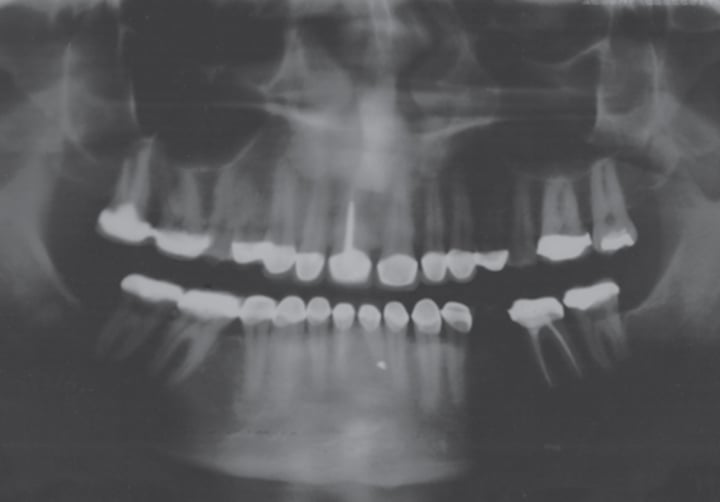Final Lab Practical Study Guide 129
1/57
There's no tags or description
Looks like no tags are added yet.
Name | Mastery | Learn | Test | Matching | Spaced |
|---|
No study sessions yet.
58 Terms
Temporary cements include:
IRM, Cavit, TempBond, RelyX
IRM is a:
Zinc oxide-eugenol (ZOE) cement
IRM has a _____ property that makes it useful for sedative and temporary fillings
obtundent (soothing)
____ can irritate the skin of a dental professional and people are also allergic to this ingredien
eugenol (clove oil)
IRM
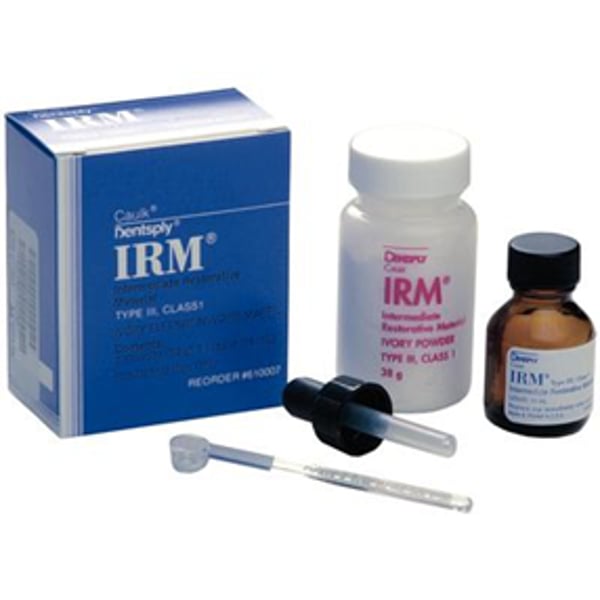
Temp Bond
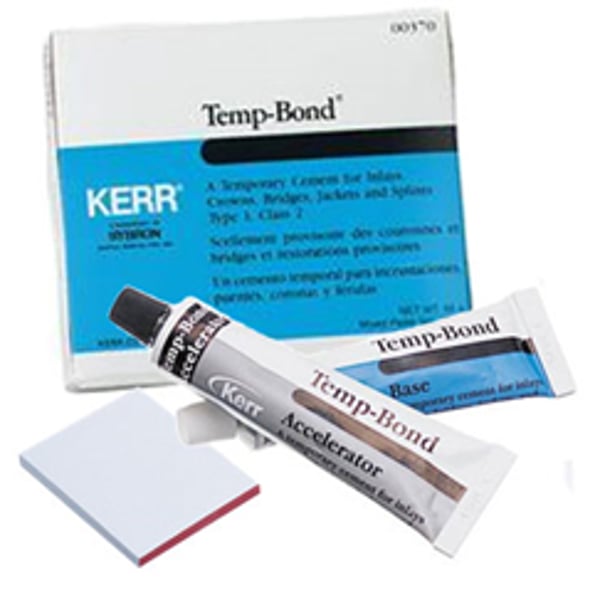
_________ can be used for provisional temporary crowns - like stainless steel crowns
Durelon
Zinc phosphate cement setting reaction is very ___________. Using a chilled ________ slab is important for mixing.
(warm, hot, exothermic) ; glass
Zinc phosphate can be _______ to the pulp
Irritating
Glass ionomer cements are ________ releasing
fluoride
Ketac is the ________________________ cement we use in dental materials.
Glass Ionomer
Ketac / Glass Ionomer
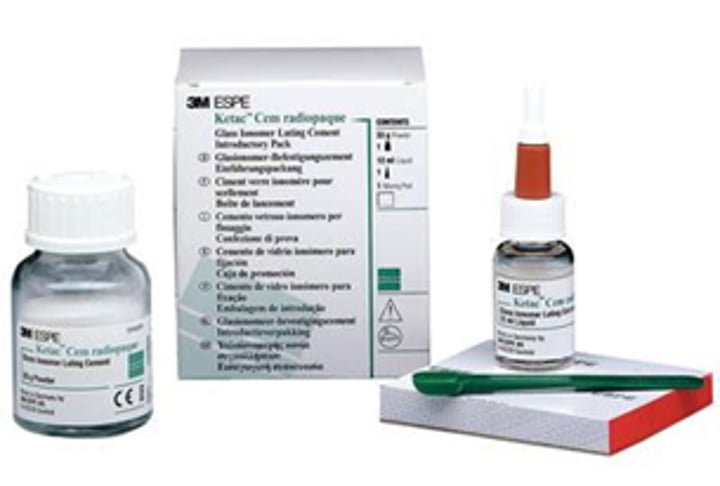
Dycal is a
Calcium Hydroxide Cement
Dycal is used for
direct pulp caps
Dycal promotes the formation of ___________ dentin.
secondary
Dycal/Calcium Hydroxide Cement
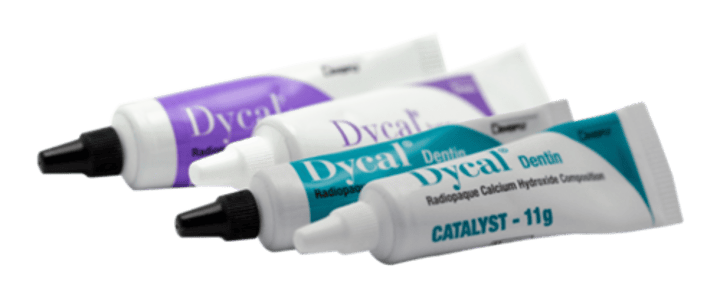
Durelon is a
polycarboxylate cement
Durelon (polycarboxylate cement)
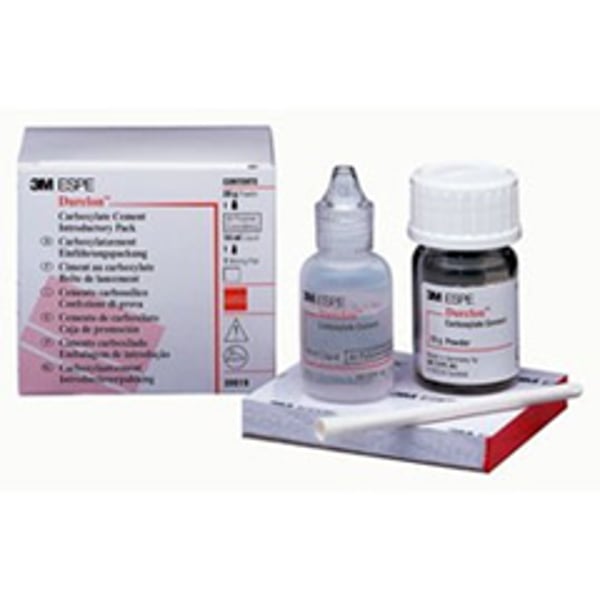
Armamentarium for a rubber dam includes
Clamps, floss, forceps, frame, ink pad, ligatures, mirror, plastic filling instrument, punch, rubber dam material, scissors, stamp
- Tofflemire matrix band holder/clamp.
- to create a proximal wall
What is this and what is its function?

- Amalgamator / Triturator
- Mixes the amalgam
What is this device and what does it do?
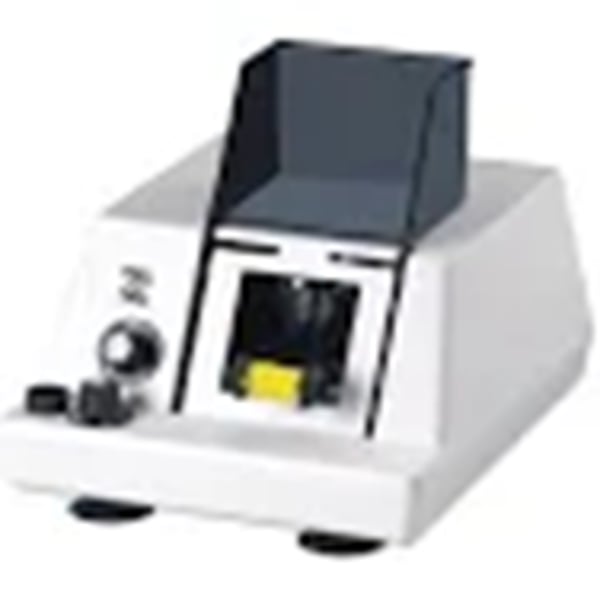
What is the purpose of an articulator?
Simulating TMJ for proper occlusion
Study Model
the physical model of the oral tissues for study
Cast
a restoration being constructed on the replica
Die
a replica of a single tooth
Steps for Sealant Placement
1. Obtain Clinic dentist authorization for sealant placement
a. Clinic dentist will treatment plan sealants and complete a clinical note authorizing sealant services
2. Gather armamentarium
3. Cleans surface with brush and plain pumice and rinses surface
4. Using the Isolite device to provide a dry field
5. Dries tooth for at least 15 seconds
6. Applies acid etch and leaves on surface for 60 seconds
7. Rinses surface while evacuating
8. Observes etched surface for desired dull, chalky appearance
9. Dries tooth for 15 seconds
10. Applies Primadry primer and leaves on for 5 seconds
11. Applies sealant material
12. Cures sealant material for 40 seconds or 2 beeps of curing light
13. Explore margins of the sealant to ensure coverage of the pits and fissures
14. Flosses interproximal contacts
15. Checks for high spots with articulating paper and Miller forceps
a. Adjusts any high spots with a round bur and slow-speed handpiece
b. If necessary - the dentist can use a high-speed handpiece and bur to adjust
16. Record in Clinic Notes
a. Student is the Provider
i. If working in pairs - add an Additional Provider and add student name
b. Attending Provider will be the clinic dentist or instructor that observed the sealant
process
c. Use the Sealant Template to add clinical notes for sealants
Discoid Cleoid
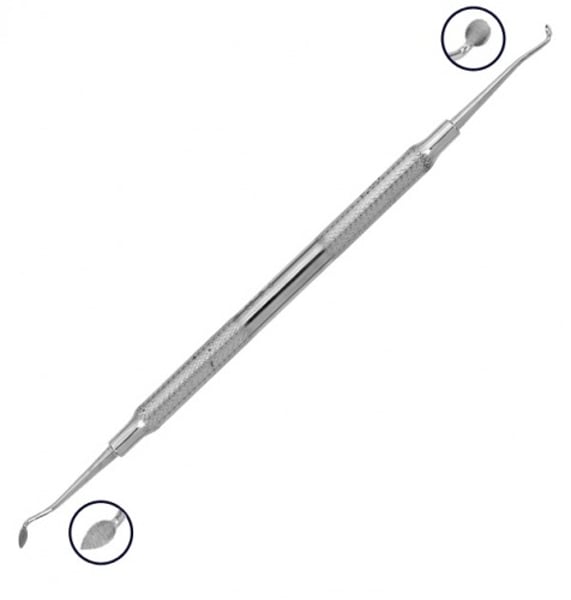
Hollenback Carver
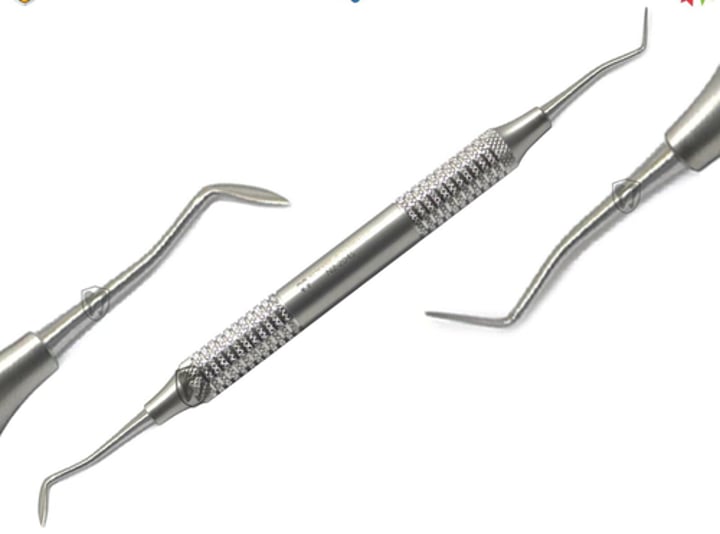
Amalgam Carrier
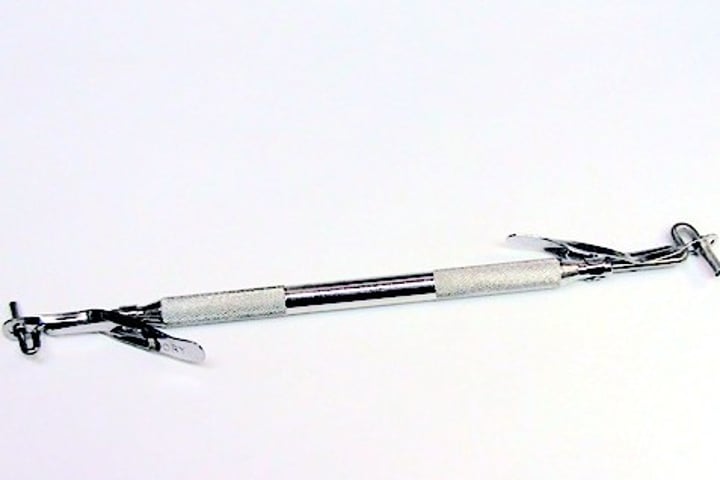
Suture Removal Scissors
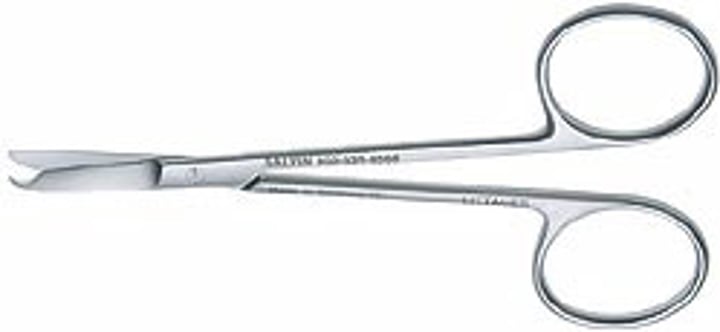
Explorer
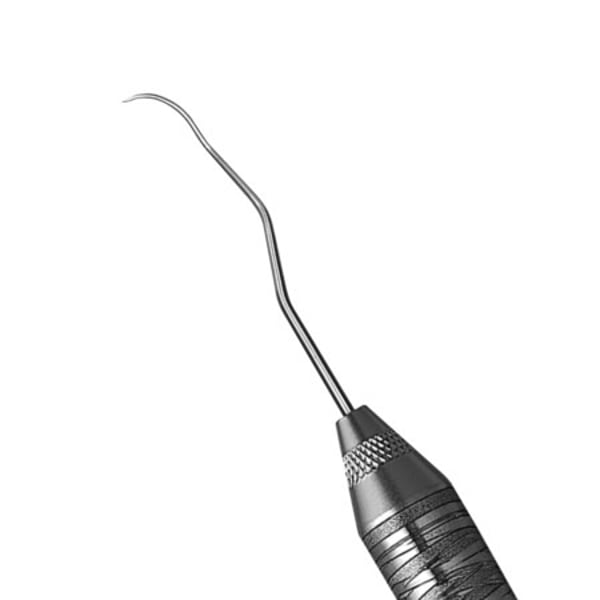
Miller Forceps

Complete Denture
Replaces all the teeth of an arch; replaces bone and gingiva
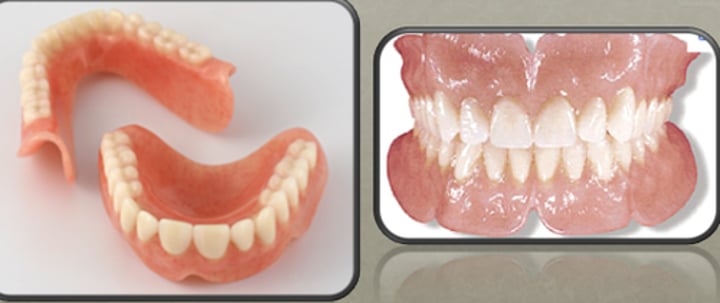
Partial Denture
Removeable prothesis that replaces only a few teeth in the dentition.
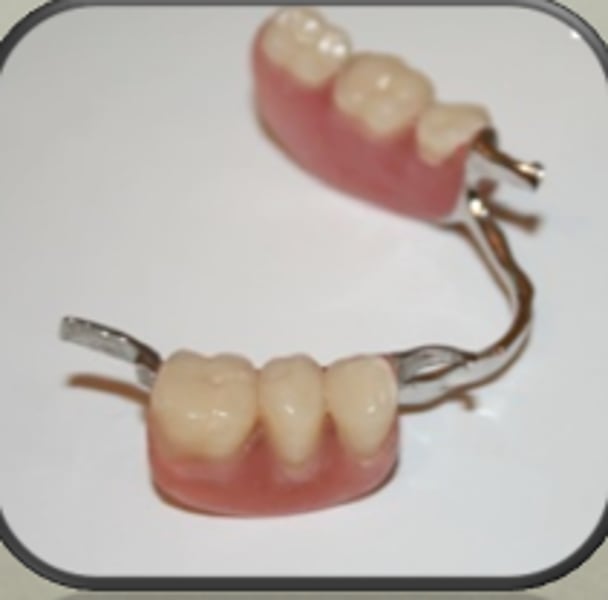
gutta percha can appear ____________________________________ as a silver point
more radiopaque but it is not as dense
What is the "piece" of the model that has been removed from the stone model?
a die
Amalgam Capsule
What is the dental material in this picture?

What are the materials inside an amalgam capsule?
Mercury, alloy, diaphragm
What is the function of the miller forceps?
Holds the articulating paper
What does an explorer do?
allows us to explore around the tooth using tactile sensation
What does the Hollenback carver do?
Contours and carves interproximal anatomy
What do the Discoid Cleoids do?
Places occlusal anatomy into the restorative material
What do the suture scissors do?
have a "moon shaped" to assist is removing sutures
What does a rubber dam clamp do?
Holds the rubber dam in place on the dentition
What does the rubber dam forceps do?
assists in placing the rubber dam clamp onto the tooth
What does PrimaDry do?
it is hydrophilic and dries the tooth
Tooth #7 exhibits a retrofill amalgam restoration
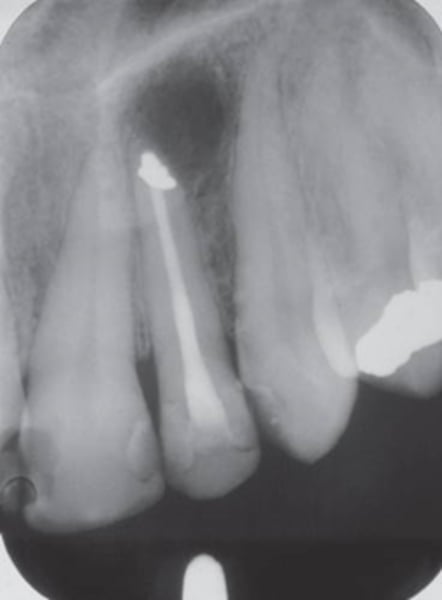
Note the composite resin restoration on the occlusal surface of tooth #28. Although it is radiopaque, its radiographic appearance is not as opaque as a metal restoration. Also note the retentive pins in tooth #31 (arrows) and the root canal therapy in tooth #2.
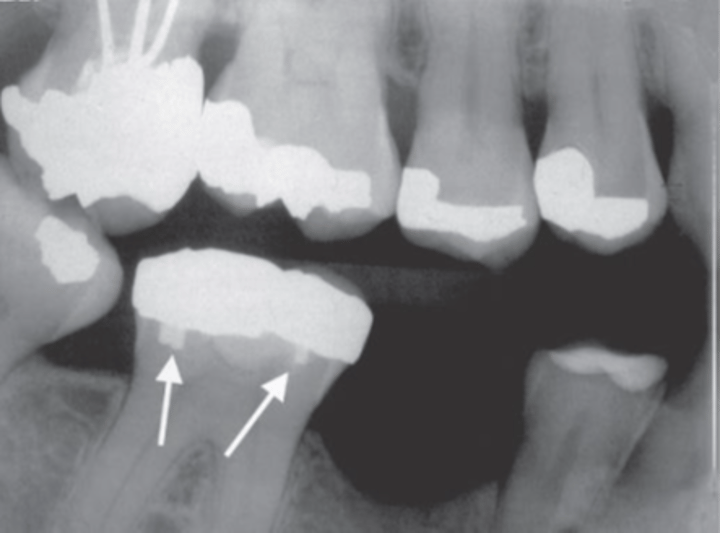
Amalgam restorations are present on teeth #13, #15, #19, #21. A base (arrow) is under the amalgam on tooth #19. A mesial radioluecency (carious lesion) is present on tooth #13.
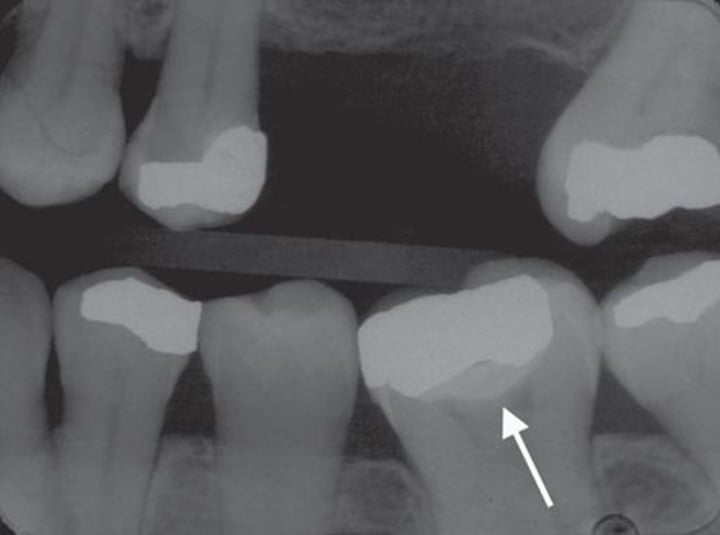
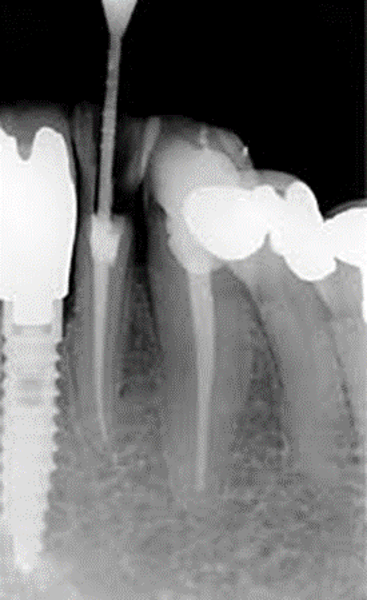
image on left is files cleaning out the pulp canal and the right image is the final X-ray after completion of placing gutta percha and the temp restoration
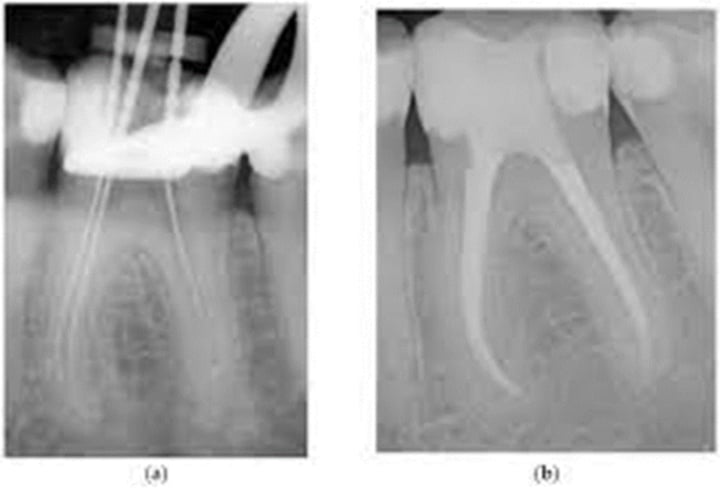
gutta percha but looks like silver points
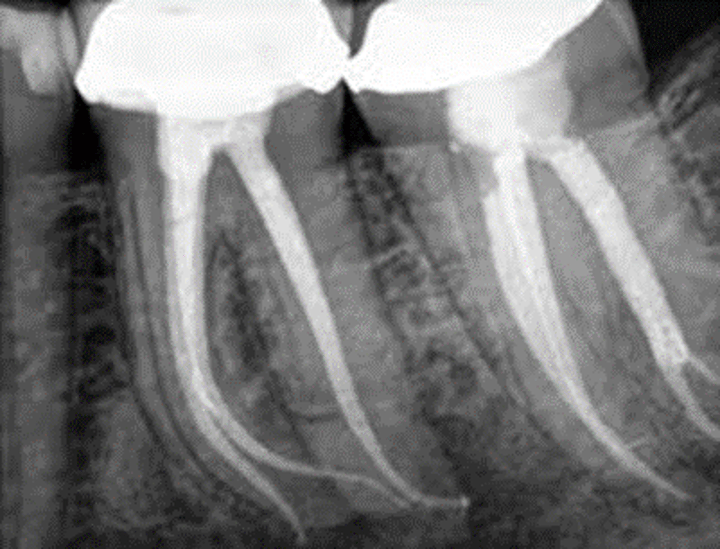
Tooth #28 has been endodontically treated. A silver point fills the root canal space.
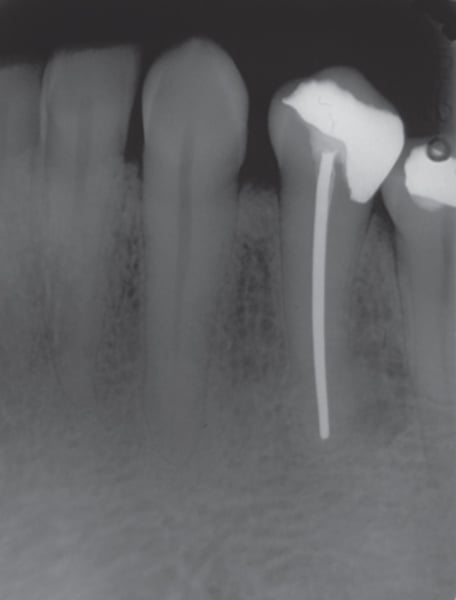
Posterior BWX with orthodontic brackets, bands, wire, and buccal tube
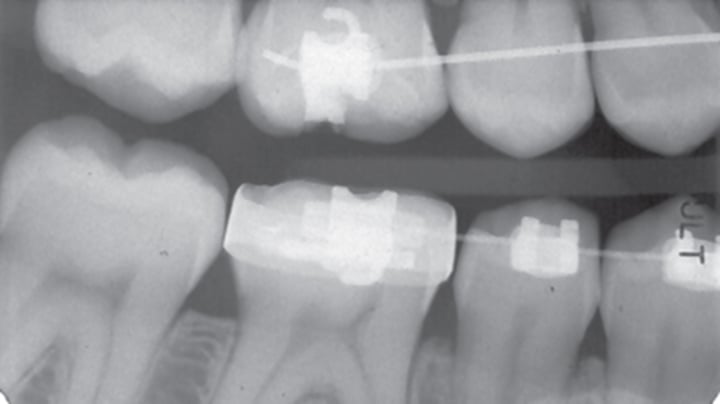
3 part bridge
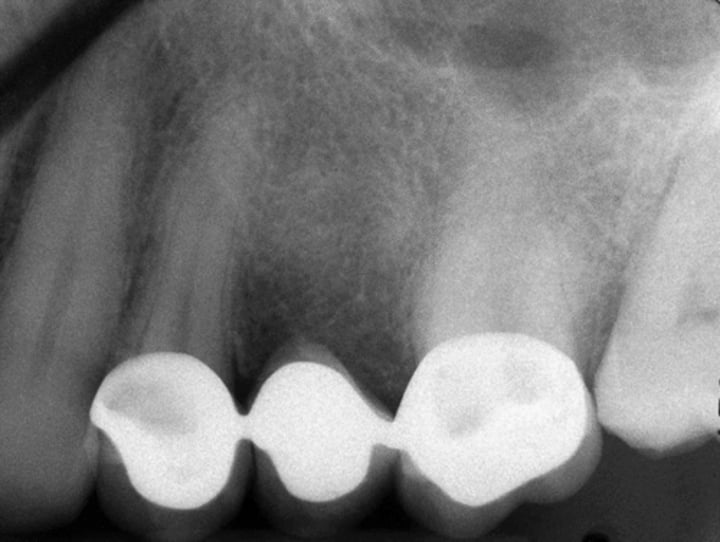
Caries present in the distal of tooth #30 and the mesial of tooth #31
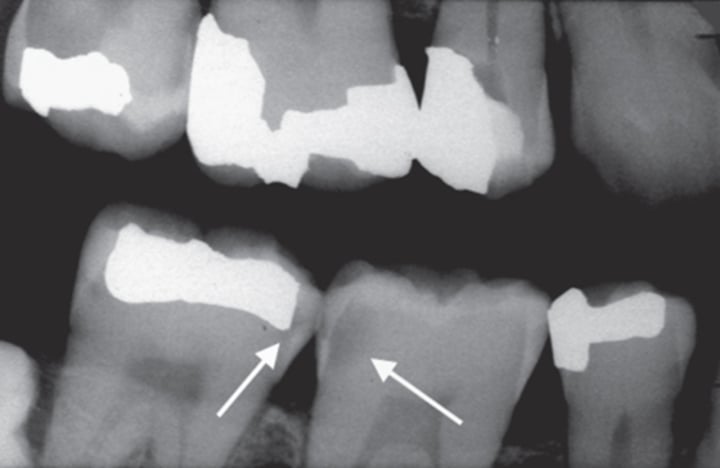
4 part bridge, decay in tooth #5
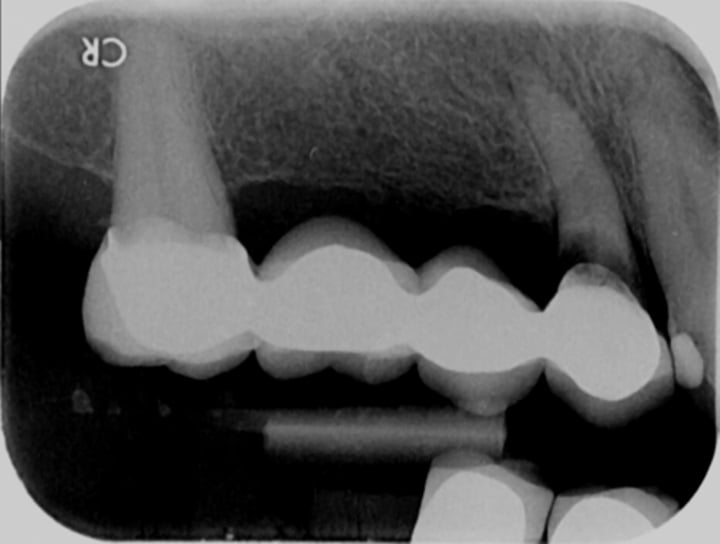
Numerous porcelain-fused-to-metal crowns are visible on the maxillary and mandibular arches on this panoramic radiograph. The radiolucent shadow at the incisal (#6-#11) and occlusal (#2, #3, #14) surfaces is the radiolucent porcelain.
